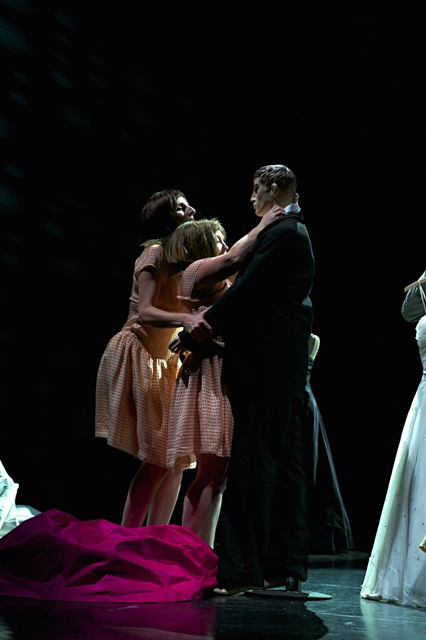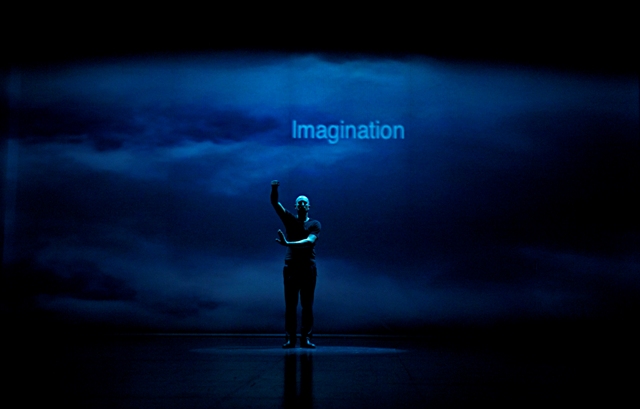As a narrator standing center and waving toward words floating in space to music indicates, Joel Pommerat’s version of the Cinderella “myth” blends story, mood, archetypes, with today’s music and characters. Cendrillon begins in darkness with a funnel of light focused on a mother who tries to speak to the daughter at her bedside before dying. The girl interprets her half-articulated words to ask that she promise never to forget her. The promise leads the “very young girl” to be dragged by her unwitting father toward a dismal life under his second wife.
The wicked stepmother (brassy blond Catherine Mestoussis, loud-voiced and mannered) makes Cendrillon a scullery maid. In skinny, sad, mousy Deborah Rouach’s interpretation, she walks around as if on the rim of a deadly nightmare, with a hose around her neck attached on the other end to a vacuum cleaner. Her father (nondescript Alfredo Canavate) seems helpless. So the pony-tailed slim, confidant young godmother (Noemie Carcaud), who’s looking for some excitement in a humdrum existence, is truly a godsend.
The prince (played by Caroline Donnelly, who doubles as second sister) is a chubby, cheery little guy who enjoys getting out of the ballroom as much as dancing it up inside. He seems glad not to be too supervised by the king (Canavate again). He’s a good balance to the teen girl with deadly memories. When he and Cendrillon finally get together, it’s really the union of two kids ready to play with each other in a game of life.
Projections, videos, and music could not be better integrated. The innovative scenic techniques are clear despite the dark tones that prevail throughout most of the play. Strong spotlights from above illuminate scenes advancing the narrative, usually played in center stage rectangles or diamond shapes.
Director Joel Pommerat obviously gets what he wants from the actors of his script in the context of a life (light,sky) proceeding away from death (darkness, shadows).


